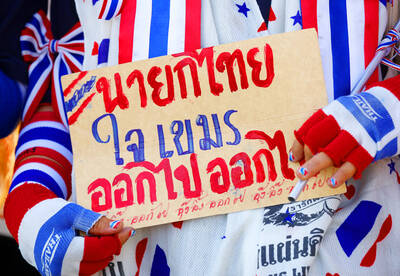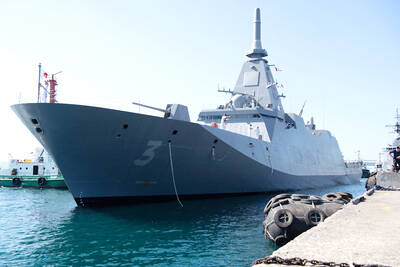Deepesh Aryal and two of his restaurant staff set out in the dead of night and brave Kathmandu’s biting wintry chill to meet a carefully cultivated contact.
As they count their cash, they could be planning a drug deal or a cloak-and-dagger meeting of spies — but the truth is rather more prosaic: they are joining a 10-hour line for cooking gas.
Like thousands of traders in Kathmandu, 28-year-old Aryal will go to extraordinary lengths to secure the fuel he needs to run his business amid an energy crisis that is crippling life in the impoverished nation.
He is forced to line up for the best part of a day and, after his 4am start, he finally has three full cylinders of cooking gas.
However, they will run out and soon he will have to repeat the arduous trip.
“I had to wait until 2pm to get the cylinders filled,” Aryal said. “I was lucky because I knew the gas dealer. Imagine how hard it is for people without connections.”
A severe shortage of gas cylinders, essential for heating and cooking in a country with no mains supply, has increased the hardship for Nepalese already enduring seasonal daily power cuts of up to 14 hours.
Exacerbating the problem, a shortage of gas and diesel means people have to line up for many hours or turn to the black market to run cars and the generators that light their shops when the electricity goes out.
The crisis has led to angry criticism of the government and even civil unrest, with protests stopping traffic and citizens resorting to criminality to get hold of fuel.
Earlier this month a group of Nepalese stopped delivery trucks carrying gas on a busy highway and distributed the cylinders among themselves.
The deprivations and sacrifices of the fuel crisis can be seen in every corner of Kathmandu.
Students have raided gas depots, lines of cars and motorcycles snake back hundreds of meters from gas stations, fuel trucks require police escorts and restaurants have reduced menus in an effort to save on gas.
Taxi driver Jagaran Tamang, 22, says he is forced to spend half his day lining up for fuel and is even considering moving to South Korea for temporary work.
“These days, I drive to a gas station and wait in line for more than five hours. During that time, I could have ferried half a dozen passengers,” he said. “It has become hard to survive.”
The factors blamed for the crisis are complex, but years of political paralysis following the 1996 to 2006 Maoist insurgency have not helped.
Experts say Nepal’s huge mountain river system could be generating up to 83,000 megawatts of power, allowing it to sell surplus electricity to other countries.
However, development of infrastructure ground to a halt during the civil war and the nation currently produces just 688 megawatts a year.
As a result, it has to import petroleum products worth 80 billion rupees (US$1 billion) a year.
The government-run Nepal Oil Corp, which provides subsidized fuel to consumers, has fallen behind on its payments to India and last month the company raised gas and diesel prices, leading to angry protests.
Demonstrators blocked traffic and shut shops across the country, withdrawing only after Nepalese Prime Minister Baburam Bhattarai pledged to address their demands.
The government has since given the company 2 billion rupees (US$25.4 million) to pay off the Indian Oil Corporation, but the crisis continues unabated.
Energy analyst Amrit Nakarmi described the fuel shortages as an “artificially created crisis” caused by the government’s failure to institute a pricing structure based on demand and world prices.
“The government has arbitrarily increased the price of petroleum products. It does not want to manage the [fuel supply] properly, but neither does it want to privatize, which has exacerbated the problem,” he said. “Our dependence on fossil fuel is increasing each passing day with the increase in population and the development of small urban areas where consumers prefer cooking gas. The crisis will be more frequent in coming years.”

Eleven people, including a former minister, were arrested in Serbia on Friday over a train station disaster in which 16 people died. The concrete canopy of the newly renovated station in the northern city of Novi Sad collapsed on Nov. 1, 2024 in a disaster widely blamed on corruption and poor oversight. It sparked a wave of student-led protests and led to the resignation of then-Serbian prime minister Milos Vucevic and the fall of his government. The public prosecutor’s office in Novi Sad opened an investigation into the accident and deaths. In February, the public prosecutor’s office for organized crime opened another probe into

RISING RACISM: A Japanese group called on China to assure safety in the country, while the Chinese embassy in Tokyo urged action against a ‘surge in xenophobia’ A Japanese woman living in China was attacked and injured by a man in a subway station in Suzhou, China, Japanese media said, hours after two Chinese men were seriously injured in violence in Tokyo. The attacks on Thursday raised concern about xenophobic sentiment in China and Japan that have been blamed for assaults in both countries. It was the third attack involving Japanese living in China since last year. In the two previous cases in China, Chinese authorities have insisted they were isolated incidents. Japanese broadcaster NHK did not identify the woman injured in Suzhou by name, but, citing the Japanese

YELLOW SHIRTS: Many protesters were associated with pro-royalist groups that had previously supported the ouster of Paetongtarn’s father, Thaksin, in 2006 Protesters rallied on Saturday in the Thai capital to demand the resignation of court-suspended Thai Prime Minister Paetongtarn Shinawatra and in support of the armed forces following a violent border dispute with Cambodia that killed more than three dozen people and displaced more than 260,000. Gathered at Bangkok’s Victory Monument despite soaring temperatures, many sang patriotic songs and listened to speeches denouncing Paetongtarn and her father, former Thai prime minister Thaksin Shinawatra, and voiced their backing of the country’s army, which has always retained substantial power in the Southeast Asian country. Police said there were about 2,000 protesters by mid-afternoon, although

MOGAMI-CLASS FRIGATES: The deal is a ‘big step toward elevating national security cooperation with Australia, which is our special strategic partner,’ a Japanese official said Australia is to upgrade its navy with 11 Mogami-class frigates built by Japan’s Mitsubishi Heavy Industries, Australian Minister for Defence Richard Marles said yesterday. Billed as Japan’s biggest defense export deal since World War II, Australia is to pay US$6 billion over the next 10 years to acquire the fleet of stealth frigates. Australia is in the midst of a major military restructure, bolstering its navy with long-range firepower in an effort to deter China. It is striving to expand its fleet of major warships from 11 to 26 over the next decade. “This is clearly the biggest defense-industry agreement that has ever